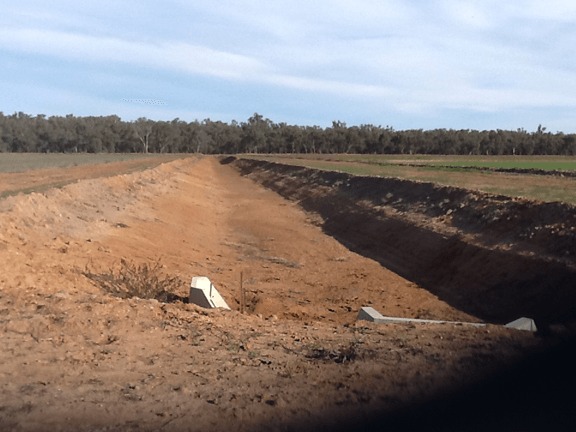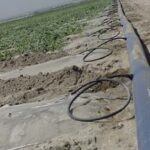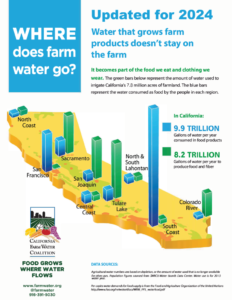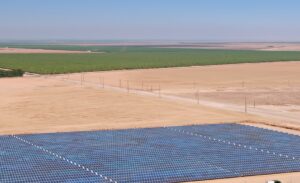Learn from the Australian experience. Indeed…don’t make our mistakes!
By Hayden Cudmore and Stefanie Schulte, New South Wales, Australia
Water reform has been ongoing in Australia for some 35 years. The advent of the 2007 Water Act in legislation and subsequent Murray Darling Basin Plan (MDBP) very much accelerated the process beyond reason. Although still maturing, Australia has the most advanced water trade markets in the world. A recognition this far, that irrigators have a water entitlement “Property Right” which lead to voluntary buybacks from irrigators by government as well as government investment in modernising water use efficiency measures on farm and irrigation supply networks returning saved water for environmental purposes (with the exception of compulsory reductions without compensation to groundwater/bore licences some years ago). Americans should learn from the Australian experience. Don’t make our mistakes!
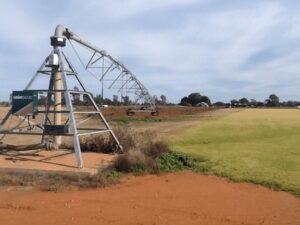
The MDBP was borne out of political expediency and (poor) decisions were made at a time of extreme drought. Compounding drought as a result of low or no water allocations was irrigator’s financial duress. The ongoing effects to agricultural support business and beyond are still being felt today. However now, with reduced water in the farm sector, these businesses cannot return as they were, which would have been the case following drought. A permanent drought if you will. Decisions were made when irrigators and communities were vulnerable.
The Basin Plan adjustment process has been too short a time period for communities and irrigated agriculture to adjust. There has been a dramatic shift in water use without a commensurate shift in land use. While there has been environmental benefit, the legacy of the MDBP for communities is a huge setback for economic and social activity regionally.
Water has always been of crucial importance for irrigated agriculture and many rural communities in Australia. According to the Australian Bureau of Statistics, the total value of irrigated agricultural production in Australia is over $13 billion with a significant portion of that produced in the Murray-Darling Basin. At the height of Australia’s millennium drought, overall water use in irrigation decreased to about 30% of pre-drought levels. As a consequence, the gross value of irrigated agriculture production, employment and the economic activities in rural communities decreased significantly. For example, rice production fell to nearly zero in 2007/01 and employment in cotton shrunk by 42% in the years between 2001 to 2006. Many farmers did not make it through Australia’s millennium drought and those who did often carry significant debt more than a decade after the drought broke.
Irrigation production directly influences employment, economic growth and prosperity across Australia’s inland region. The drought and the subsequent removal of productive water through Australia’s water reform process has, and is having, a direct and long-lasting effect on the economic and social fabric of irrigation communities. More importantly, each of these communities have different tipping points beyond which the environmental water recovery by the Australian Federal Government causes irreversible damage to that economic and social fabric.
Despite a number of positive aspects of the Australian Water reform process since the millennium drought, there have been many negative impacts on irrigators and Basin communities, which pose an ongoing risk to these communities. The cost burdens associated with the water reform process are significant, ongoing and will likely increase with increased Federal Government environmental water holdings.
The ultimate removal of 2750GL (2.23 million acre-feet) of productive water will cost the Australian economy between $5 and $7 million dollars a day in lost irrigated agricultural production every day into the future. — Stefanie Schulte, NSWIC
This value is the lower bound of the cost of the Basin Plan as the loss in irrigated agricultural production has a continued effect to rural communities through loss of employment and revenue to local economies. It is estimated that in some instances that ‘multiplier effect’ could be as large as seven times the farm-gate value.
To date the Australian authorities have done little to identify these impacts despite the overriding imperative of the Federal Water Act to be implemented against a triple bottom line objectives of optimising the social and economic outcomes as well as the environmental objectives of the water reform process.
It is imperative that it is recognised that Australia’s millennium drought caused a lot of harm for irrigated agriculture and rural communities and the additional impact of the subsequent water reform process has not yet been fully estimated and assessed. It is important that policy makers listen to all those individuals who are directly impacted by the reform process to understand the impacts the reform has on these rural communities.
Hayden Cudmore is a farmer in New South Wales, Australia
Stefanie Schulte is the Policy Manager for New South Wales Irrigators’ Council
